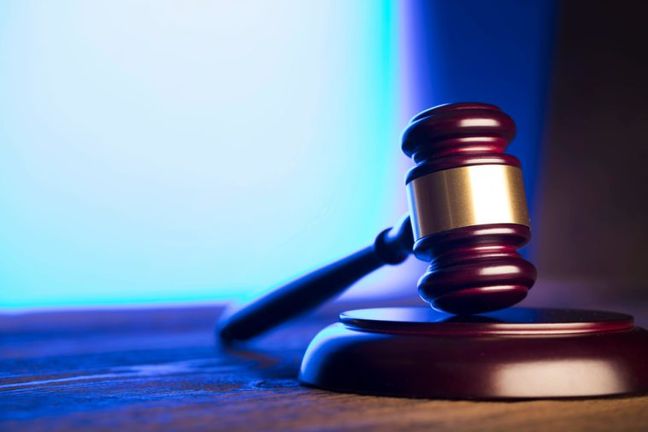At the end of 2015, the Committee on Civil Justice Reform was established as part of the Arizona Supreme Court’s strategic agenda to promote access to justice and improve the court process to better serve the public. Recently, the Arizona Supreme Court approved the procedural reforms proposed by the Committee. These rule changes go into place July 1, 2018, and are important to note for purposes of preparing to successfully defend civil litigation claims.
The Order containing the rule changes is a 151 page document. While there are multiple rule changes, some of the highlights are:
- Differentiated case-management providing for case tiering and lower discovery limits for less complicated cases.
- Expedited procedures for resolving discovery and disclosure disputes.
- Revised rules regarding preservation, disclosure, and discovery of electronically stored information (“ESI”).
- Changes to better protect non-parties from unduly burdensome requests for information via civil subpoenas.
- New procedures to resolve disputes about the duties of parties or non-parties to preserve ESI.
The biggest change is the addition of Rule 26.2 titled, “Tiered Limits to Discovery Based on Attributes of Cases.” Under this rule change, cases filed on or after July 1, 2018, are to be considered for assignment to a tier by case characteristics consistent with the factors that define proportional discovery in Rule 26(b)(1). Depending on which tier the case is assigned will impact the time and tools available during discovery.
There are three tiers of cases available. While the characteristics are not exhaustive, Tier 1 cases typically involve matters such as automobile tort, intentional tort, premises liability, and insurance coverage claims with claimed damages of $50,000 or less. These cases can be tried in one or two days and have little documentary evidence and few witnesses..
Tier 2 cases are slightly more complex than Tier 1 cases, in that they have additional documentary evidence and witnesses. The Tier 2 cases may involve expert witnesses and multiple theories of liability, along with possible counterclaims or cross-claims. Cases in which nonmonetary relief alone is claimed or in conjunction with claims for damages between $50,000 and $300,000 will be considered Tier 2. Cases that do not easily fall within Tiers 1 and 3 belong in Tier 2.
Finally, Tier 3 cases are those that are logistically or legally complex, such as class actions, antitrust, multi-party commercial or construction cases, securities cases, products liability cases, environmental torts, construction defect cases, medical malpractice and mass torts. Tier 3 cases will have voluminous documentary evidence, pretrial motions raising difficult or novel legal issues, large number of witnesses, and possibly coordination related to actions pending in other courts. Additionally, Tier 3 cases are those in which the claimed damages are more than $300,000.
Certain discovery limitations are put into place depending upon the tier assigned to the specific case,. The tier assigned to a case is determined by either a stipulation or motion, placement by the court based on the characteristics of the case, or the sum of relief sought in complaint, counterclaims, or cross-claims. A case will be assigned a tier based on damages claimed in the action if not assigned by a stipulation, motion, or the court. The amount of damages claimed in an action includes all monetary damages sought by all parties in all claims for relief in the original pleadings, but excludes claims for punitive damages, interest, attorneys’ fees, and costs.
The number of days available under each tier to conduct discovery runs from the date of the Early Meeting. Under new Rule 16(b)(1), the Early Meeting, is required to take place no later than 30 days after a party files a responsive pleading or 120 days after the action commences. At the Early Meeting, parties are to discuss anticipated disclosures concerning witnesses, possible motions, agreements to aid in just, speedy, and inexpensive resolution of the case, and the discovery tier applicable to the subject case. Parties should also discuss the information required in the Joint Report and Proposed Scheduling Orders.
Tier 1 cases have 120 days from the Early Meeting date to complete discovery. Each side is permitted five (5) total hours of fact witness depositions, five (5) Rule 33 interrogatories, five (5) Rule 34 requests for production, and 10 Rule 36 requests for admission.
Tier 2 cases have 180 days from the Early Meeting date to complete discovery. Each side is permitted 15 total hours of fact witness depositions, 10 Rule 33 interrogatories, 10 Rule 34 requests for production, 10 Rule 36 requests for admission, and 180 days in which to complete discovery.
Finally, in Tier 3 cases, discovery must be completed in 240 days from the date of the Early Meeting. Under Tier 3, each side is permitted 30 total hours of fact witness depositions, 20 Rule 33 interrogatories, 10 Rule 34 requests for production, and 20 Rule 36 requests for admissions.
While a motion or stipulation may be filed with the court requesting authority to conduct discovery beyond the tier limits, in reality the new tier system drastically reduces and constricts parties in the amount of discovery they can conduct to obtain information. In particular, these new rules will alter the initial case strategy for defendants who rely on discovery to gather information to develop defense arguments.
The new tier system will require parties to serve their initial disclosure statements before serving discovery requests on the other party. Under Rule 26(f)(1), “[u]nless the court orders otherwise for good cause, a party may not seek discovery from any source – including nonparties – before that party serves its initial disclosure statement under Rule 26.1”
Takeaway
In a time when these rule changes favor plaintiffs and make it difficult to defend claims, we are constantly on the lookout and working on strategies for us to better meet your expectations and provide outstanding results. We are available to discuss these rule changes and the impact they may have on you at 602-386-5656.

 Author: Sitar Bhatt
Author: Sitar Bhatt
 Cannabis Workers Allege Quota to Trim 4 Pounds a Day Violates the California Labor Code
Cannabis Workers Allege Quota to Trim 4 Pounds a Day Violates the California Labor Code
 The Ninth Circuit Reminds Us: Every Word Matters
The Ninth Circuit Reminds Us: Every Word Matters
 NO WAY, PRO SE! The Consequences of Abusing the Judicial System as a Pro Se Litigant in Colorado
NO WAY, PRO SE! The Consequences of Abusing the Judicial System as a Pro Se Litigant in Colorado
 Victim of Financial Mismanagement or Unlawful Retaliation? New Jersey City University Program Founder Claims School Retaliated After Reporting Alleged Sexual Harassment
Victim of Financial Mismanagement or Unlawful Retaliation? New Jersey City University Program Founder Claims School Retaliated After Reporting Alleged Sexual Harassment
 “Real Housewives” Gets a Reality Check
“Real Housewives” Gets a Reality Check
 Missing a Chapter: Insufficiency of Expert Deposition Testimony in Medical Malpractice Litigation
Missing a Chapter: Insufficiency of Expert Deposition Testimony in Medical Malpractice Litigation
 Crash Course: Why Summary Judgment Misses the Mark in Illinois Multi-Cause Limousine Crash Collision
Crash Course: Why Summary Judgment Misses the Mark in Illinois Multi-Cause Limousine Crash Collision
 Bitter Truths: Lead, Cadmium, and Defective Pleadings in California Chocolate Class Action
Bitter Truths: Lead, Cadmium, and Defective Pleadings in California Chocolate Class Action
 The Law of Unintended Consequences: Including Insurance Brokers in Litigation Strategy Communication May Waive the Attorney-Client Privilege
The Law of Unintended Consequences: Including Insurance Brokers in Litigation Strategy Communication May Waive the Attorney-Client Privilege
 With an Eye Toward Summary Judgment: Courts as Gatekeepers in Medical Malpractice Claims
With an Eye Toward Summary Judgment: Courts as Gatekeepers in Medical Malpractice Claims
 Automatic Attorneys’ Fees from Contractual Arbitration? Not So Fast!
Automatic Attorneys’ Fees from Contractual Arbitration? Not So Fast!
 Suspension of Rules Lifted – Is Arizona Back to Normal?
Suspension of Rules Lifted – Is Arizona Back to Normal?
 What is a School’s Standard of Care? Is it Based on Special Relationships, Public Policy, or Both?
What is a School’s Standard of Care? Is it Based on Special Relationships, Public Policy, or Both?
 Arizona Claim Preclusion: A Powerful Tool to Stop the Re-Litigation of a Claim
Arizona Claim Preclusion: A Powerful Tool to Stop the Re-Litigation of a Claim
 Arizona 2021 Legislative Update
Arizona 2021 Legislative Update
 Pima County’s FASTAR Programs Do Not Violate Arizona’s Compulsory Arbitration Statute
Pima County’s FASTAR Programs Do Not Violate Arizona’s Compulsory Arbitration Statute
 Arizona and an Excess Carrier’s Equitable Subrogation Claim
Arizona and an Excess Carrier’s Equitable Subrogation Claim
 Future of Litigation in Arizona: Potential Influx of Non-Lawyer Money?
Future of Litigation in Arizona: Potential Influx of Non-Lawyer Money?